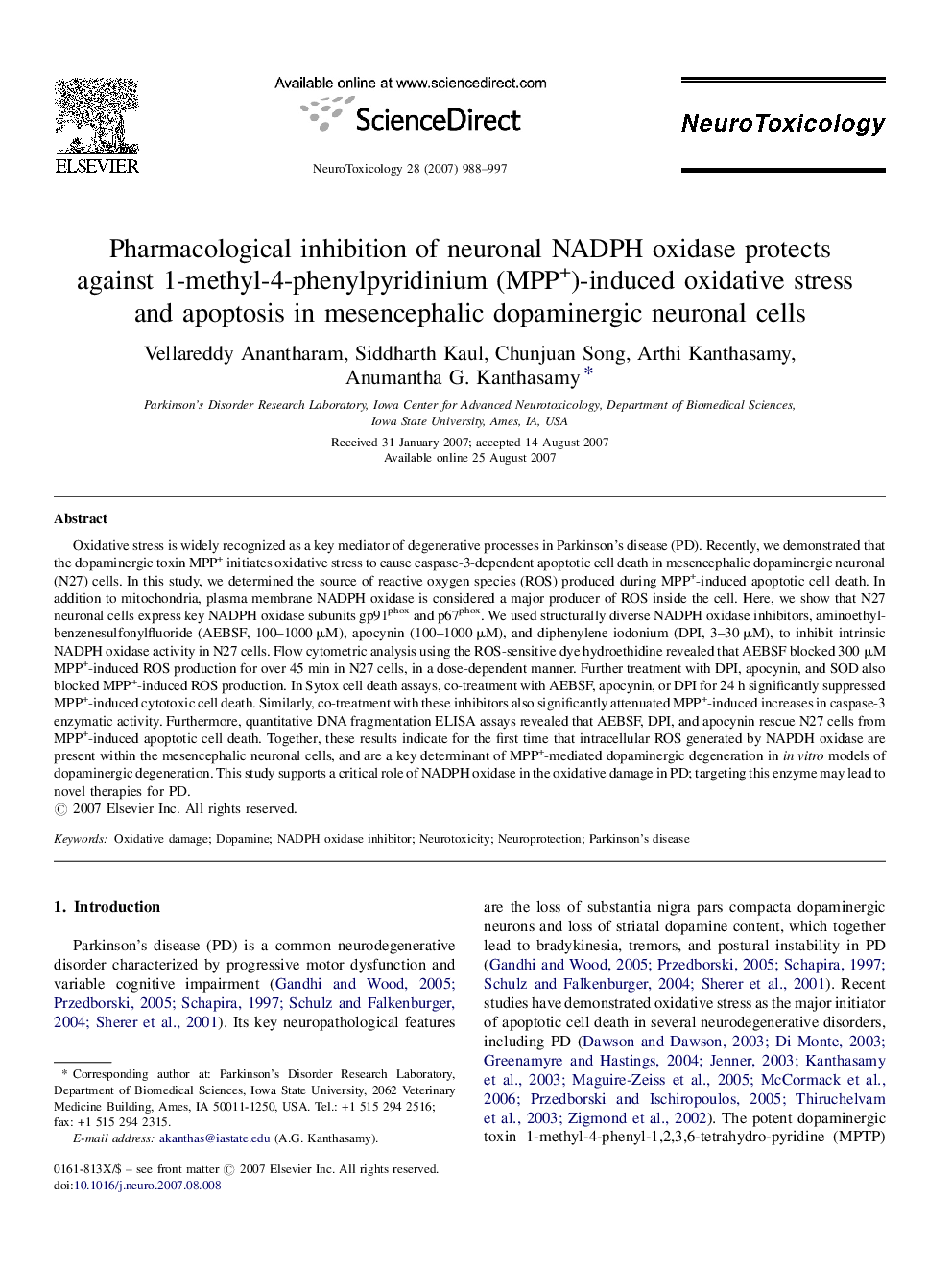| Article ID | Journal | Published Year | Pages | File Type |
|---|---|---|---|---|
| 2590428 | NeuroToxicology | 2007 | 10 Pages |
Oxidative stress is widely recognized as a key mediator of degenerative processes in Parkinson's disease (PD). Recently, we demonstrated that the dopaminergic toxin MPP+ initiates oxidative stress to cause caspase-3-dependent apoptotic cell death in mesencephalic dopaminergic neuronal (N27) cells. In this study, we determined the source of reactive oxygen species (ROS) produced during MPP+-induced apoptotic cell death. In addition to mitochondria, plasma membrane NADPH oxidase is considered a major producer of ROS inside the cell. Here, we show that N27 neuronal cells express key NADPH oxidase subunits gp91phox and p67phox. We used structurally diverse NADPH oxidase inhibitors, aminoethyl-benzenesulfonylfluoride (AEBSF, 100–1000 μM), apocynin (100–1000 μM), and diphenylene iodonium (DPI, 3–30 μM), to inhibit intrinsic NADPH oxidase activity in N27 cells. Flow cytometric analysis using the ROS-sensitive dye hydroethidine revealed that AEBSF blocked 300 μM MPP+-induced ROS production for over 45 min in N27 cells, in a dose-dependent manner. Further treatment with DPI, apocynin, and SOD also blocked MPP+-induced ROS production. In Sytox cell death assays, co-treatment with AEBSF, apocynin, or DPI for 24 h significantly suppressed MPP+-induced cytotoxic cell death. Similarly, co-treatment with these inhibitors also significantly attenuated MPP+-induced increases in caspase-3 enzymatic activity. Furthermore, quantitative DNA fragmentation ELISA assays revealed that AEBSF, DPI, and apocynin rescue N27 cells from MPP+-induced apoptotic cell death. Together, these results indicate for the first time that intracellular ROS generated by NAPDH oxidase are present within the mesencephalic neuronal cells, and are a key determinant of MPP+-mediated dopaminergic degeneration in in vitro models of dopaminergic degeneration. This study supports a critical role of NADPH oxidase in the oxidative damage in PD; targeting this enzyme may lead to novel therapies for PD.
